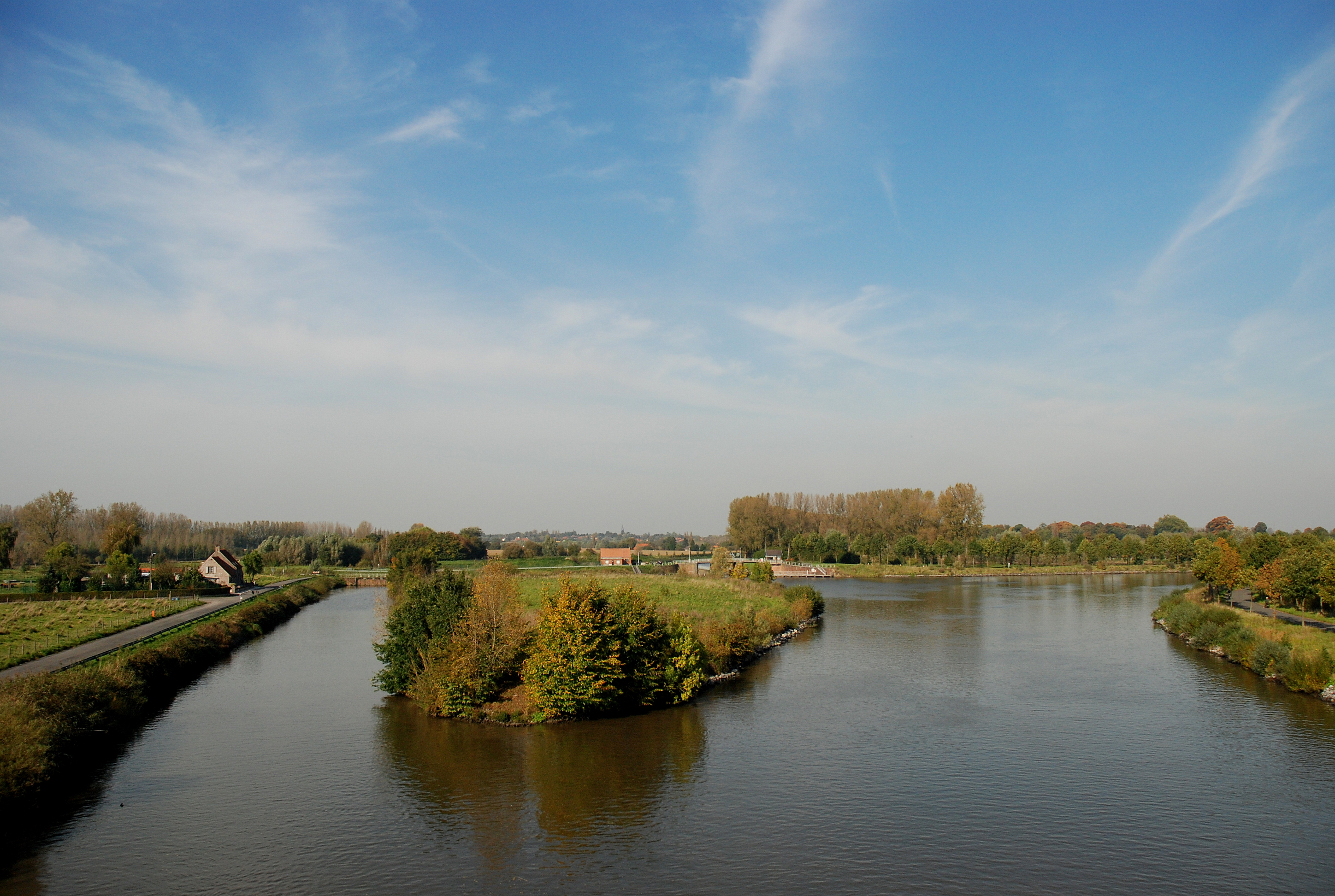Schipdonk Canal on:
[Wikipedia]
[Google]
[Amazon]
 The Schipdonk Canal ( French: ''Canal de Schipdonk'' or ''Dérivation de la Lys'';
The Schipdonk Canal ( French: ''Canal de Schipdonk'' or ''Dérivation de la Lys'';
 The digging of this canal took place between 1846 and 1860.
The digging of this canal took place between 1846 and 1860.The Schipdonk Canal
A paper on the website of Zomergem Zomergem. Along with the Leopold Canal it was one of the first major infrastructure projects of the newly independent
Dutch
Dutch or Nederlands commonly refers to:
* Something of, from, or related to the Netherlands
** Dutch people as an ethnic group ()
** Dutch nationality law, history and regulations of Dutch citizenship ()
** Dutch language ()
* In specific terms, i ...
: ''Schipdonkkanaal'' or ''Afleidingskanaal van de Leie'') is a canal in the Belgian provinces of East Flanders
East Flanders ( ; ; ; ) is a Provinces of Belgium, province of Belgium. It borders (clockwise from the North) the Netherlands, Dutch province of Zeeland and the Belgian provinces of Antwerp (province), Antwerp, Flemish Brabant, Hainaut (provinc ...
and West Flanders
West Flanders is the westernmost province of the Flemish Region, in Belgium. It is the only coastal Belgian province, facing the North Sea to the northwest. It has land borders with the Dutch province of Zeeland to the northeast, the Flemis ...
. With a length of , the canal runs in a northerly direction from Deinze
Deinze () is a city and a municipality in the Belgian province of East Flanders. It comprises the city of Deinze, and the towns of Astene, Bachte-Maria-Leerne, Gottem, Grammene, Hansbeke, Landegem, Meigem, Merendree, Nevele, Petegem-aan-de-Lei ...
, turning to a north-western direction roughly halfway along its route to the North Sea
The North Sea lies between Great Britain, Denmark, Norway, Germany, the Netherlands, Belgium, and France. A sea on the European continental shelf, it connects to the Atlantic Ocean through the English Channel in the south and the Norwegian Se ...
with which it meets on the coast near to Heist. It crosses both the Ghent-Bruges Canal and for its final runs parallel with the Leopold Canal as it approaches the north Belgian coast. For most of this final section the two canals are separated only by a dyke.
History
A paper on the website of Zomergem Zomergem. Along with the Leopold Canal it was one of the first major infrastructure projects of the newly independent
Belgium
Belgium, officially the Kingdom of Belgium, is a country in Northwestern Europe. Situated in a coastal lowland region known as the Low Countries, it is bordered by the Netherlands to the north, Germany to the east, Luxembourg to the southeas ...
.
In the middle part of the nineteenth century the economy of the Kortrijk
Kortrijk ( , ; or ''Kortrik''; ), sometimes known in English as Courtrai or Courtray ( ), is a Belgian City status in Belgium, city and Municipalities in Belgium, municipality in the Flemish Region, Flemish Provinces of Belgium, province of We ...
region was dominated by the textile
Textile is an Hyponymy and hypernymy, umbrella term that includes various Fiber, fiber-based materials, including fibers, yarns, Staple (textiles)#Filament fiber, filaments, Thread (yarn), threads, and different types of #Fabric, fabric. ...
industry, with an emphasis on linen
Linen () is a textile made from the fibers of the flax plant.
Linen is very strong and absorbent, and it dries faster than cotton. Because of these properties, linen is comfortable to wear in hot weather and is valued for use in garments. Lin ...
. This industry heavily polluted the Lys River. In order to divert the polluted water from the centre of Ghent
Ghent ( ; ; historically known as ''Gaunt'' in English) is a City status in Belgium, city and a Municipalities of Belgium, municipality in the Flemish Region of Belgium. It is the capital and largest city of the Provinces of Belgium, province ...
, it was decided to cut the Schipdonk Canal which transported the pollution more directly to the North Sea
The North Sea lies between Great Britain, Denmark, Norway, Germany, the Netherlands, Belgium, and France. A sea on the European continental shelf, it connects to the Atlantic Ocean through the English Channel in the south and the Norwegian Se ...
, avoiding Ghent in the process. A further benefit from the canal involved protecting Ghent against the periodic flooding to which it had been subject. The third significant benefit was that the canal provided a relatively direct route for water transport from the industrially active Kortrijk district to the North Sea.
Nomenclature
The Schipdonk Canal is sometimes known as ''De Stinker'' ("the stinker") because of its traditionally polluted condition. This also contrasts with the condition of the Leopold Canal, sometimes known as ''De Blinker'' ("the shiner" or "the shining one"), recalling its relatively clear water.Recreation
Over virtually the full length of the canal the paths beside it are maintained as cycle paths. Together with the Ghent-Bruges Canal, the Schipdonk Canal is also used for recreational boat trips.References
{{Reflist Canals in Flanders Landforms of East Flanders Canals in West Flanders Canals opened in 1860